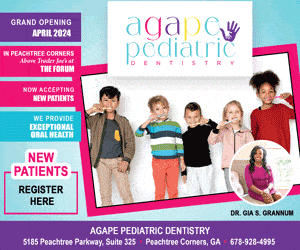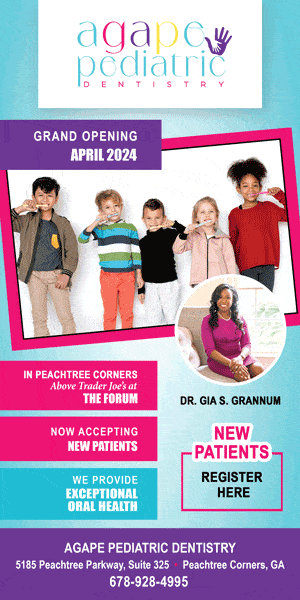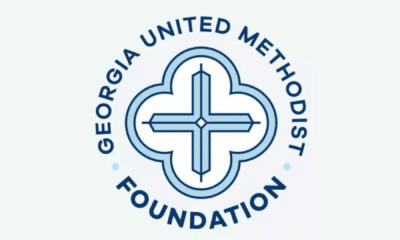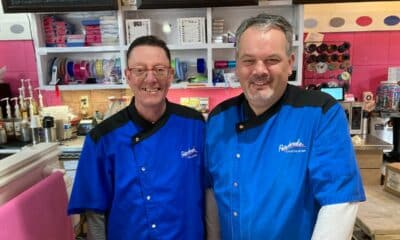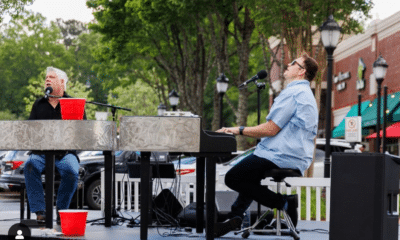Business
Peachtree Corner’s ControlRad is Making Radiation Safe for Medical Staff [Podcast]
Published
4 years agoon
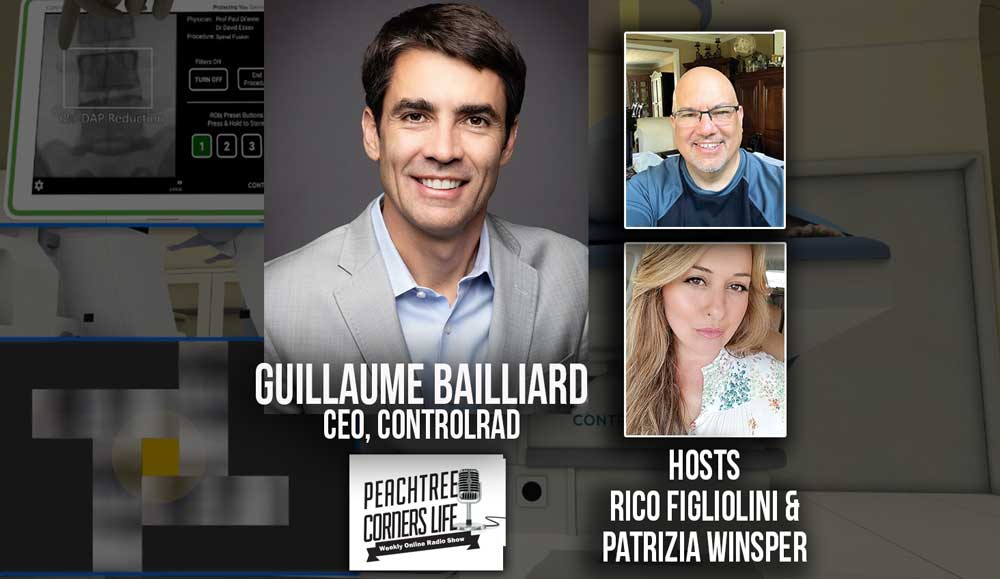
More than ever before is the general public concerned for the health and safety for the brave
men and women in our medical and healthcare system. ControlRad and CEO Guillaume
Bailliard, our guest on today’s episode, have developed special medical technology to protect
both medical staff and patients from excess radiation. Join Rico Figliolini, Patrizia Winsper, and Guillaume as they discuss the inner workings of this amazing and life-saving technology.
Resources:
Website: https://www.controlrad.com
“The way our device works is… that we add an accessory to existing x-ray units that is a semi-transparent filter… that moves in real time… depending on what the physician needs to see on the screen. So we’re able to radically and dramatically reduce radiation, unnecessary radiation to both patients and medical staff using our device.”
Guillaume Bailliard
Timestamp:
[00:00:30] – Intro
[00:03:13] – ControlRad’s Device
[00:07:48] – Input Devices
[00:09:25] – Using Existing Technology
[00:10:23] – ControlRad’s Consumers
[00:12:19] – Consolidation
[00:13:42] – Other New Products
[00:14:27] – ALARA
[00:16:14] – Repercussions of Radiation
[00:18:57] – Case Studies
[00:20:42] – Time in Development
[00:22:02] – Moving to Peachtree Corners
[00:24:08] – Effects of COVID-19 on ControlRad
[00:28:29] – Closing
Podcast transcript
Rico: [00:00:30] Hi everyone. This is Rico Figliolini, host of the Peachtree Corners Life. Glad that you’re joining up, whether it’s live from on this feed with Facebook or you’re joining us on our podcast or YouTube video. I would appreciate it if you follow us online, currently if you like Facebook page for Peachtree Corners Life, you get notification of our live stream so that’d be great to do. Before we get to our today’s show, great guest to follow up to a cover story that we did an issue back about vibrant technology in the heart of Peachtree Corners. I just want to introduce our sponsor for the family of podcasts we do, which is Hargray Fiber. Hargray Fiber is a company that deals in fiber optic cable, communications, IT management, bundle services, throughout the Southeast. They’re in our communities. They’re doing great work in our communities too, especially now reaching out, providing free internet services per company, doubling bandwidths for existing customers. They’re doing a lot of things out there to make teleworking way easier. To find out more about them check them out HargrayFiber.com. We appreciate their sponsorship. So now let’s join with my cohost Patrizia Winsper, who wrote the article on these technology companies and today’s guest, she’s going to introduce him. I’m going to pick them on screen right now, Patrizia go ahead and introduce our guest today.
Patrizia: [00:01:51] Good afternoon, everyone. I have the sincere pleasure of introducing to you, CEO of ControlRad Guillaume Bailliard. Hi Guillaume.
Guillaume: [00:02:02] Hi everyone. Thanks for having me on.
Patrizia: [00:02:05] How are you doing today Guillaume?
Guillaume: [00:02:07] Doing fantastic. It’s a beautiful day outside.
Patrizia: [00:02:10] Awesome. It’s such a great time to do a podcast about some positive news and some great innovations that are taking place right here in Peachtree Corners. So I hope everyone has a chance to just settle down with us for a little bit and think happy thoughts and listen to some good news that’s going on. Right Rico?
Rico: [00:02:27] Yes, absolutely. Our guest is actually in the city of Peachtree Corners and he’s at his office at Tech Park. Right Guillaume?
Guillaume: [00:02:39] That’s right. I’m here in Peachtree Corners at the office on Scientific Drive, absolutely. So we are, today we’re doing some testing inside the, our laboratory here in the office. So we’re here to support and review the testing.
Rico: [00:02:55] For sure you’re doing this socially safe and all that, I imagine, right?
Guillaume: [00:02:59] I am. I did take off my 95 mask that I have with me here, but I took it off here for this interview.
Rico: [00:03:05] Excellent. Good. So let’s, let’s get right down to it then. Why don’t we ask, Patrizia did you want to show the magazine?
Patrizia: [00:03:13] Just wanted to point out that this is a story that appeared on the cover of our February, March, 2020 issue. And ControlRad is being featured today in this podcast, and of course that’s Guillaume Bailliard, CEO. Now if we’re looking at the name of your company, Guillaume, ControlRad, let’s think control radiation. This company has come up with a medical device that actually helps the medical professionals. Who are doing these procedures on a daily basis and protecting them or controlling that excess radiation that is unnecessary and that is currently inevitable without your device. So let’s talk about ControlRad’s medical device and exactly how is it that you are performing these procedures sparing both surgeons and patients, the exposure to that unnecessary scatter radiation.
Guillaume: [00:04:16] Okay, great. Yeah, so what people, you know, through this COVID-19 pandemic are now more appreciating than ever is that medical professionals put their lives at risk for treating patients. And our technology helps radically and dramatically reduce the life altering risks associated with radiation exposure to the medical staff. So as an example, when you’re getting, let’s say, a stent deployed in your heart to open up a blockage. A cardiologist will use a cath lab, which is a x-ray unit that continuously deploys x-ray to see inside your body to deploy that stent. The patient gets radiated one time, but the medical staff, the physician and the nurses and everybody else in the room will get radiated their entire lives as they do multiple of these procedures per day and throughout the year. A typical cardiologist will get exposed the equivalent of 150,000 chest X-rays throughout their lifetime. So it’s very similar to the NFL concussion story where we knew these risks were there for a long time. It took a couple of key cases for that, for this to surface as an issue, and we’ve deployed a technology to help reduce that risk. And the risks are dramatic. There is two times the risk of left brain tumors. There’s a 50% increase in incidents in cataracts. There’s a 34% increase in stroke incidents when compared to other physicians that are not in the x-ray room. So both patients and medical staff are, get dramatic, dramatically less radiation using our device. And that’s how, and basically the way our device works is, I think to answer your question Patrizia, is that we add an accessory to existing x-ray units that is a semi-transparent filter. Thank you for showing the image that moves in real time based on where the physician needs to, what, depending on where the physician needs to see on the screen. So we’re able to radically and dramatically reduce radiation, unnecessary radiation to both patients and medical staff using our device.
Patrizia: [00:06:34] So your filter is situated under the patients?
Guillaume: [00:06:38] That’s correct. The filter is under the patient right above the tube. The x-ray tube that hits the patient. I think you’ve got to move it over just a little, right there where the extra tube shoots through the patient we retrofit and add our filters to existing x-ray units. Which is a bonus for administrators because you don’t have to go out and buy a brand new x-ray unit or a brand new cath lab unit. We can retrofit your existing cath lab or your existing C-arm.
Patrizia: [00:07:10] So your device is retrofitted on the machine right here.
Guillaume: [00:07:13] That’s correct.
Patrizia: [00:07:14] And then let’s talk about this.
Guillaume: [00:07:18] And that is a tablet and the tablet, this is placed next to the patient where the physician is and the physician can select on the tablet and basically draw a region of interest to move the filter in the right location. So basically what you have is you have a tablet that is the input device, and then you have filters that are moved based on where the physician is looking on the patient.
Patrizia: [00:07:48] Now Guillaume, I realize you deal with this every day, but to mere mortals like Rico and I and probably the general public, it’s quite fascinating how the physician is able to select the region of interest, both with just his eyes. Is it special glasses that he wears for the computer to sense where he’s looking?
Guillaume: [00:08:08] Right. There are two types of input devices. One is an eye tracker, which is a device that is actually next to the monitor. No glasses are needed or we use a tablet, so both are devices and input devices that are used to help move those filters. The device that we’re using for the first system that we rolled out. Earlier this year is using a tablet.
Patrizia: [00:08:33] Okay.
Rico: [00:08:34] Okay. Wow, that sounds a bit almost Sci-fi. It almost feels like Star Trek or something.
Patrizia: [00:08:40] It really sounds super futuristic.
Rico: [00:08:42] Right? I mean, you know if I can wear those glasses and it follows where I want to put it. That’s the ultimate thing, right? I mean, even augmented reality, I could see you probably even advancing it further where the information will be right on the glass like that at some point.
Guillaume: [00:08:57] Eventually there, certainly eye tracker technology has, has an unlimited amount of potential and you know, currently they’re being deployed in actually laptops as a standard feature. Certainly the gaming world has helped advance the, the amount of funding in the eye tracking technology. And we’ve basically taken an off the shelf eye tracking technology, and are able to retrofit it with our device and use it as one of the input devices that we use.
Rico: [00:09:25] You know, what I like about it is that you’re dealing with an industry where the equipment is so expensive. And it’s almost legacy in some ways because even the operating
systems and some of the old systems, they might be based on windows, windows seven even as far back. And you are giving them an option to just augment existing equipment they have.
Guillaume: [00:09:47] That is a key point. And our ability to retrofit existing x-ray units is important. A cath lab, which is used for the procedure I was describing earlier, to help deploy stents. Can be $1 million or more. So if you wanted this feature to radically, dramatically reduce your risks of all these adverse events that I talked about, an administrator, a hospital may have a really tough time looking for capital to acquire another cath lab, it could cost $1 million. But if you’re able to retrofit your existing, your existing C-arm, then that is a massive benefit. So that is definitely a key feature.
Rico: [00:10:23] So the, the type of customers are you looking at are major hospitals, small local clinic? Or where’s your sweet spot as far as customers and industries?
Guillaume: [00:10:33] All of the above. So there are, there are more than 20,000 mobile C-arms in the US and those are used in hospitals for surgeries, spine trauma. They’re used by cardiologists. They’re also used by pain management facilities in outpatient facilities. They’re also used in ASCs, ambulatory surgical centers. So these mobile C-arms are deployed all over the place, in outpatient facilities and in hospitals. So anybody who is using x-ray to look inside the body without cutting it open essentially, could potentially benefit from our technology. To be clear, this is for fluoroscopic systems or C-arms. So this is not for dental equipment or plain x-ray. If I broke my arm and I go to an urgent care center where you’re taking one single exposure, the medical staff is not in the room during that exposure and the patient gets a very low amount of x-ray, a single time. This is for continuous x-ray in deployment of, let’s say stents, or let’s say in a pain management facility.
Patrizia: [00:11:48] We’re looking at physicians like urologists, cardiologists. Who else might deploy?
Guillaume: [00:11:56] Interventional radiologists, cardiologists, spine surgeons, pain management, gastroenterologists, pulmonologists that are using scopes to take biopsies inside the lung. I think you mentioned urologist, vascular surgeons. There’s, there’s seven to eight specialties that use mobile C-arms or fixed cath labs to see inside of body deploy devices.
Rico: [00:12:19] You know, I’ve found that a lot of the hospitals like Northside hospital and a lot of these major, larger facilities, companies are buying up smaller places. They’re setting up outreach satellite offices, essentially almost like a contractor based. Where they bring in the specialists into, they build a hub, provide all the machinery and then the specialists come and they rent space essentially is what they’re doing. Is that a good, I mean, how are you seeing that industry responding to what you want to do, what you’re providing?
Guillaume: [00:12:52] Yeah, that’s, that’s definitely, the consolidation in the healthcare system is certainly something that’s happening. As you get more buying power as a hospital and you
acquire competitors, let’s say I’m an ambulatories, an ASC and employee surgical center, or I have my own outpatient facility as a physician, but I’m not part of the hospital. Certainly consolidation is a trend in, in many markets. There’s pros and cons in consolidation. Us hospitals tend to have more buying power. I’m a big fan of, of competition, but at the same time, consolidation can help provide better care. So there’s, there’s pros and cons to those models. It’s not going to really impact us, our business, but certainly a trend is, is a, that’s a true trend that we’re seeing nationwide.
Rico: [00:13:42] Okay. You have two other products coming out? You mentioned that before we got on. Are they things you could talk about?
Guillaume: [00:13:49] Yeah, so the first device has been FDA cleared, and we’re currently selling today, and that’s retrofitting mobile C-arms. Mobile C-arms. Are smaller C-arms that are used by all the specialties I talked about. The next device that we will be releasing in the second half. We’re in preparation or preparing our submission is for fixed arms or cath labs. So it’s the same device. It’s just on a separate markets within the healthcare space.
Rico: [00:14:24] Okay.
Patrizia: [00:14:27] Guillaume let’s talk about Alara. It’s the FDA’s guiding principle of radiation safety. So Alara stands for?
Guillaume: [00:14:38] As low as reasonably achievable. And Alara, the objective of Alara is any amount of x-ray, is considered not good. So if you can get it as low as you can while not impacting the ability of the physician to provide the care that he or she needs to provide, then that is a, that is a good place to be. So the key, the key component of our device is that we’re able to reduce radiation without impacting image quality, negatively impacting image quality. Historically, a lot of people have struggled. At reducing the radiation exposure to the physician and medical staff. But it has come at a cost and that cost typically has been lower image quality. And when you lower image quality, you lower the opportunity of providing the best possible care you can. So Alara is that principle that the FDA and many other societies follow which is, let’s get x-ray radiation as low as we can without impacting outcome
Patrizia: [00:15:45] And let’s talk about ControlRad and how far they are able to reduce that level of radiation exposure.
Guillaume: [00:15:52] So in our FDA submission, we would do anywhere between 50 to 89% the radiation exposure to both patients and the entire medical staff inside the room. That is considered game changing.
Patrizia: [00:16:08] That is considered game changing
Guillaume: [00:16:10] Especially when you don’t negatively impact image quality.
Patrizia: [00:16:14] You talked to us earlier about some of the negative repercussions from the physicians who are continuously bombarded with this scattered radiation and you mentioned brain tumors, on which side of the head were they more likely to?
Guillaume: [00:16:26] Left sided brain tumor. So they have two times incremental risk of brain cancer compared to other medical professionals, and they have an increasing incidence in left brain. Why is left brain relevant? When the physician is at the patient they’re on the left side of the patient and it’s their left side of the brain that is closest to the x-ray tube. So there’s a direct correlation with exposure from the x-ray tube to brain tumors. So that is why the left brain tumor is a very meaningful.
Patrizia: [00:17:02] And the last time I had spoken to you at your office when it was still safe to be side by side and have an actual conversation with someone in person. You did mention there was at least one study out that indicated that your image quality. was not only not affected adversely, but improved for the physician that was testing the product. Have you had any other such tests or results from other physicians?
Guillaume: [00:17:27] That’s right. So we, we in our, in our first installations at the beginning of the year, the feedback has been, well, not only are you not negatively impacting image quality, but your image quality has actually gone up. We’ve actually improved image quality. And we thought this was going to be the case from bench testing, lab testing that we had done. But we didn’t really appreciate how clinically meaningful it was. And the feedback from this position was you have improved image quality to the point that you’re able to reduce the operating time. Cause if I can see what I need to see better and faster than I can actually reduce my operating time. If you could reduce operating time and time where you’re sedated, the cost of the OR and the advantages to the patient are very meaningful and very clinically important. So when we were out to reduce radiation and what we have found when we launched the technology is not only did we reduce radiation, but we actually clinically improved image quality. That is not part of our FDA label, in our FDA claims. But now we’re going to be, we’re going to look to further do additional testing to be able to provide that claim that and investigate if we can get that claim from the FDA. But very important outcome from these initial installs.
Patrizia: [00:18:54] Absolutely.
Rico: [00:18:57] So do you, do you have several clients that you’ve been selling to? Can you talk of any case studies right now, Guillaume, of successes that you’d like to mention?
Guillaume: [00:19:08] Yeah, so we have installations in surgical fields. We also have it in outpatient facilities. By pain management in a pain management field. And the utilization and the reductions and radiation that we’re seeing are matching what we claimed we were able to do. And we’re very pleased with that and we’re getting additional outcomes like Patrizia just
pointed out regarding image quality. So we’re very pleased with the outcomes, both in being able to deliver a very high radiation reduction and then provide better image quality.
Rico: [00:19:48] Do you have, what are you looking forward to? What developments are you, beyond the two products you’re working on, you know, long range. Do you have long range plans that you’d like to be doing in this field as well?
Guillaume: [00:20:01] Yeah. So in the next iterations we’ll be looking at further developing for other types of C-arms. So there’s a whole host of different types of C-arms and x-ray equipment. So we’ve launched it with a mobile C-arm, a GE mobile C-arm. We’re going to be doing it with a fix C-arm cath lab at the, at the risk of prying too much information is going to be on it fixed CRM with a Siemens, another vendor. And we’re in talks with all vendors and we’re getting interest from a lot of different parties and are looking to collaborate more with some of these C-arm OEMs to further expand the reach of our technology.
Rico: [00:20:42] How long have you guys been in business?
Guillaume: [00:20:46] Well, we’ve, the technology was originally launched in 2010, by three Israelis, our research development center’s in Israel. Our global headquarters are here in Peachtree Corners. And so we went through a very long period of development, which is very typical for medical devices. The ramp up in technology, in research and development of medical devices can last decades. And we are now just getting our 5, 10 K clearance, as I shared last year, and now in the midst of a commercial launch. So we’ve gone through a very long period of development and now we’re at this very exciting period in our company where we’re now launching the technology and seeing the fruits of all our labor. You know, really taking hold this year, which is really exciting. And fortunate for us, we raised our last capital round with a VC in the fourth quarter of last year. So we’re actually well capitalized and certainly wouldn’t want to be doing that fundraising now behind us in the fourth quarter. And we’re well capitalized to you know, to move the company forward and fuel the commercial launch.
Patrizia: [00:22:02] Guillaume your headquarters here in Peachtree Corners is rather new. Talk to us about why your company shifted from, was it Pennsylvania?
Guillaume: [00:22:12] Yup, Pennsylvania.
Patrizia: [00:22:13] Why Peachtree Corners, Georgia?
Guillaume: [00:22:15] So originally the, our research and developments are still in Tel Aviv and our global headquarters prior was in Radnor, Pennsylvania, which is right outside of Philly. And I was working actually for a company called Monica Technologies, which is a French medical device company based out of Paris, but the US headquarters was here actually in Atlanta as well in Duluth. And so I was already here in Atlanta. So when I joined the company as the CEO, we moved the headquarters from Radnor, Pennsylvania down here to Atlanta. I had found that,
you know, when you peel back the onion here in Atlanta, you’d be surprised at how much medical device talent you actually have here in our own backyard. Certainly it doesn’t match what you have in Boston or in San Francisco, but you’d be surprised on how many medical device talent there is here. The cost of living, it doesn’t compare to what it looks like in Philly. The weather doesn’t, you’ve got the Atlanta airports that’s, you know, for a lot of that does a lot of global travel, is very convenient. So we found Peachtree Corners in particular are very well centered, right north of Atlanta, access to 141 is very useful. 141 miles will be an interstate. I can get to the airport in 35 minutes, 40 minutes if there’s no traffic, of course. But I’m playing around traffic, so that’s okay. And you know, we have people that work here in the office that live inside their perimeter that lives North of us, that lives West of us, that lives East of us. And we find ourselves actually pretty well centralized here and certainly the cost of labor and in this building that I’m here in Scientific Park is fantastic compared to what’s even inside the perimeter, but certainly a lot cheaper than in Philly.
Rico: [00:23:59] Sure.
Patrizia: [00:24:00] Well, we’re glad you decided to settle here.
Rico: [00:24:04] And in this time of COVID-19 Philly’s not the place to be.
Patrizia: [00:24:08] Let’s talk about that a little bit. I don’t mean to be a Debbie downer, but it’s happening and it’s among us.
Guillaume: [00:24:18] Yeah.
Patrizia: [00:24:19] We stopped human activity across the globe. So how, if in any way, has COVID-19 effected ControlRad?
Guillaume: [00:24:26] Yeah, certainly COVID-19 is going to, has impacted everybody. I mean, our premise is pretty simple. We see the light at the end of the tunnel. This too will pass. And we just have to get through this period of time. Who knows what that period of time looks like. But we have to get through this time and be as productive as we can during these times. We have found that for us as a company, we’re very fortunate because we’re just launching our technology. So we had nominal cash, predict, forecasted for this year. So our burn rate in our runway is really not impacted by COVID-19. Our team in Israel and our team here in Atlanta are working very effectively remotely. We’re able to come into the office as I am today to do conduct testing on our x-ray equipment that’s here in the office. So we can, you know, very carefully and with very few people conduct what we need to conduct. Are we at 100% productivity? No. But we’re doing extremely well and find it too. And have found, frankly, in our building of habits of things that we weren’t doing prior, that we’ll probably will keep on doing. Are there meetings that I would typically have gone to that I didn’t really need to go to? Probably. Are there, you know, we’re comfortable conducting all company meetings with a team in Israel. Having a chance for team members to meet each other that probably wouldn’t had a chance to meet, probably
should’ve been doing that before. So there’s habits that we’re actually building up that we’re probably going to be building up even once we get outta here. So we have found, just stay pretty productive and are pleased with how we’re performing.
Rico: [00:26:06] It’s a, it is a tough environment. I deal with a lot of different companies and their sales staff. Just reaching out to people. There’s no landline to call anymore. You have to have someone’s cell phone essentially, or an email. So it’s a little bit more difficult to do. Are there other things that you’d like to share, Guillaume, about the company that we haven’t covered yet?
Guillaume: [00:26:32] No. I mean, listen, we’re excited to be here. I’m very thankful to be on this podcast and be part of this community. There’s a lot going on here. I’m sitting across here from Atlanta Tech Park, which is where we were before we were in this building. It’s exciting to see all the investments and energy in this place. I’m amazed at all the construction that’s going on just north of us. It certainly gave us a lot of different lunch opportunities. So it’s great to see the investment and excitement here. My kids go to Wesleyan across the street, so it’s excited to be part of this community and thanks for having me on.
Rico: [00:27:10] I appreciate that. There were several people, Robin Benfay, from Atlanta Tech Park moving Ashley Young that recommended your company, part of this profile that we did in the last issue. So they were able to speak up about you and your company.
Guillaume: [00:27:27] Great.
Rico: [00:27:28] So, and you’re right, there’s so much going on. I mean, Atlanta Tech Park with the one and a half mile Curiosity Lab track. I mean, some of the stuff is just like your technology because what’s going now there’s going to be even a bigger appeal for some of this stuff, right? We were talking a little bit before earlier about the safety of medical staff. It’s a big deal now. You know, not having the N95 mask or the protection equipment. This falls in line with that, right? We’re keeping staff safe.
Guillaume: [00:28:02] I mean, frankly, we believe the sensitivity to our technology coming out of this thing is going to be higher than it was before. Not that people didn’t care of the medical staff. And these risks that I talked about were very well documented and known. But certainly coming out of COVID-19, there’s going to be a even higher sensitivity to protecting the medical staff. So we definitely believe that that will benefit us.
Patrizia: [00:28:29] Truly innovative, truly remarkable, and absolutely touching that you’re protecting the people who are saving lives every day.
Guillaume: [00:28:36] Yes, absolutely.
Rico: [00:28:38] Well, we appreciate you coming on the show with us. For those that want to read the full article, you will find the digital edition on LivinginPeachtreeCorners.com. Go to our digital page and you’ll find that issue. The February-March issue that was held up.
Patrizia: [00:28:56] Residents may still have in their home somewhere and you can read all about ControlRod and four other very innovative companies in Peachtree Corners.
Rico: [00:29:07] Yes, yes. And we’ll be posting it to the website shortly also. So there, we’ll have the series of articles online. Guillaume, I appreciate you coming out and coming out socially safe online. It’s not zoom, but it’s close, right?
Guillaume: [00:29:23] Yeah, absolutely. All right. Thanks guys. Appreciate it.
Rico: [00:29:28] Take care. Bye.
Related
Business
BRACK: Peachtree Corners to lose Peterbrooke Chocolatier
Published
1 week agoon
April 19, 2024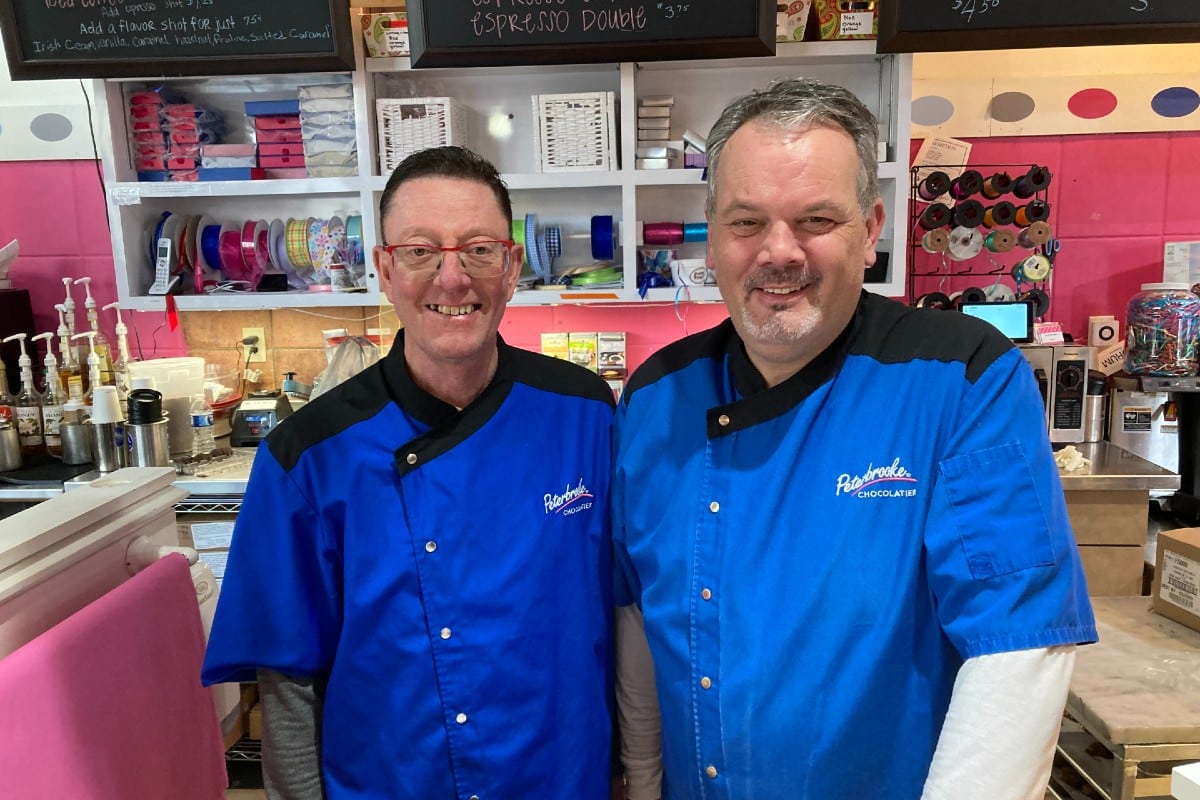
Peachtree Corners will soon lose one of its most iconic, popular and tasty businesses.
Peterbrooke Chocolatier, run by Geoffrey Wilson and Scott Gottuso, has been told by Peachtree Forum landlords, North American Properties and Nuveen Real Estate, that its lease will not be renewed. The last day of business will be July 25.
Meanwhile, Peachtree Forum is getting several new stores. They include Kendra Scott, Sucre, and The NOW Massage. Previously announced were Alloy Personal Training, Cookie Fix, Gallery Anderson Smith, Giulia, Lovesac, Nando’s Peri-Peri and Stretchlab. Wilson adds: “We are not in their big picture.”
Wilson has operated Peterbrooke at the Peachtree Forum for 14 years and Gottuso has been there nine years. They have made the chocolatier profitable and doubled sales. Wilson says: “We turned it around through community involvement and made relationships. We worked with the schools, gave donations, did a lot in the community, and made a difference. We produce most everything we sell in the shop, so it’s labor intensive. We make European-style chocolate treats from scratch from the very best ingredients, package it, make gift baskets, and also sell a lot of gelato.”
Key items include truffles, hand-made caramels, cherry cordials, chocolate-covered cookies and pretzels and strawberries hand-dipped in their own blend of chocolates. (They are all good!) One of Wilson’s and Gottuso’s most iconic products is chocolate popcorn. Once you try it, regular popcorn is tasteless. “We sell a lot of it.” Wilson adds: “Gelato sales have carried us in the summertime, since there are not many chocolate holidays in the summer.”
Peterbrooke now has five employees, and would like to have 10, but it is difficult to hire people with the skills in chocolatiering. A key part of its business is corporate companies, such as Delta Air Lines and Capital Insight. The Peachtree Corners’ Peterbrooke has corporate customers as far away as Cleveland, Ohio.
The operators were surprised when the Forum owners did not renew its five year lease. “The big decisions were made in Charlotte or Cincinnati, not locally,” Wilson feels. “We were no longer in their big picture. They want new and glitzy, shiny, fancy and trendy.”
The operators plan to start their own chocolate company, to be called “Scoffrey,” and initially sell online, plus have pop-up locations during holidays, and possibly have a booth in other merchants’ stores on occasions.
“Whatever we do would look different. We might rent a space somewhere close by so that people can still have the good chocolate experience with us, but we won’t have a regular audience walking by.”
Another element: the price of chocolate futures has spiked this year, with a bad crop production year. Wilson says: “That is key to our business and a huge cost increase. That doesn’t help.”
Wilson adds that the forced closing of the Peterbrooke location “is something like the death of a friend. But you go to the funeral and to the wake, and in six months or a year, It won’t be so bad.”
Have a comment? Send to: elliott@elliottbrack
Written by Elliott Brack
This material is presented with permission from Elliott Brack’s GwinnettForum, an online site published Tuesdays and Fridays. To become better informed about Gwinnett, subscribe (at no cost) at GwinnettForum
Related
Business
North American Properties Revitalizes Avenue East Cobb
Published
1 week agoon
April 16, 2024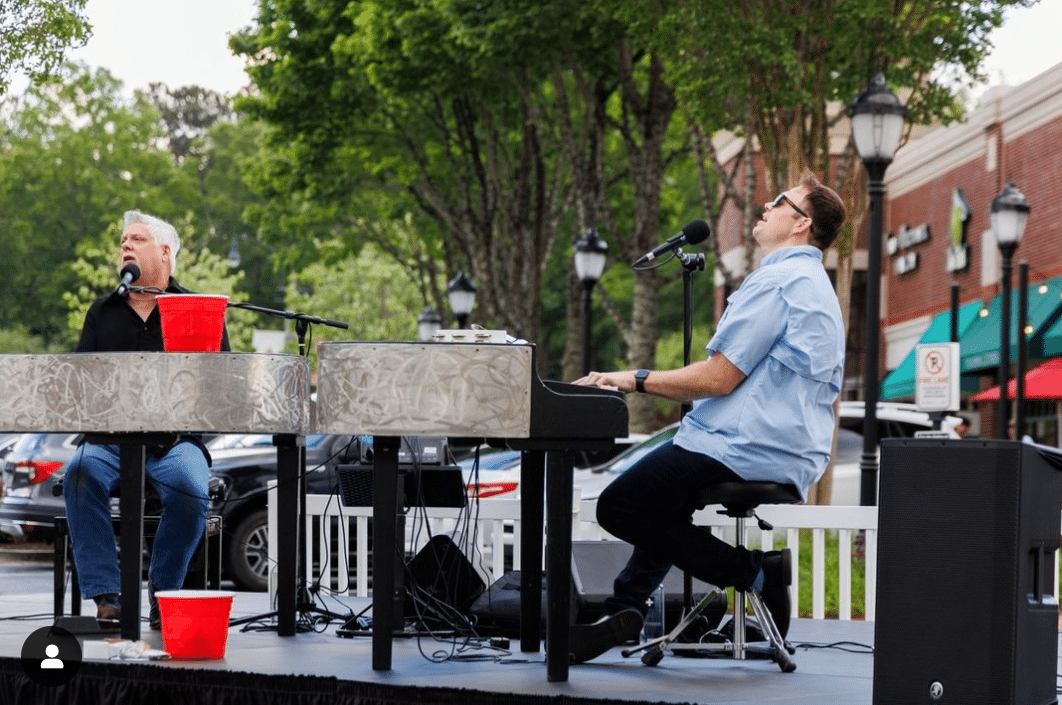
North American Properties (NAP) has revamped the Avenue East Cobb shopping center in Marietta, boosting its appeal to suburban residents seeking a more urban lifestyle. Now, it’s being honored as part of the Atlanta Business Chronicle‘s “Best in Atlanta Real Estate” coverage.
NAP is known for transforming properties like Atlantic Station, Colony Square and The Forum.
According to the Atlanta Business Chronicle, the redevelopment involved demolishing part of the main building to build a public plaza with a stage surrounded by restaurant patios.
A new concierge facility was also added, including a canopy for drop-offs. Additionally, smaller retail buildings were created for standalone tenants. The business mix was updated to include names like Warby Parker, Lululemon and Peach State Pizza.
NAP also increased community engagement by partnering with at least 10 local organizations for social events. These efforts have proven successful. Over the last two years, Avenue East Cobb has seen a 36% increase in sales per square foot thanks to a major rise in foot traffic.
More news from North American Properties can be found here.
Related
Business
North American Properties Secures 3 New Brands for The Forum
Published
2 weeks agoon
April 11, 2024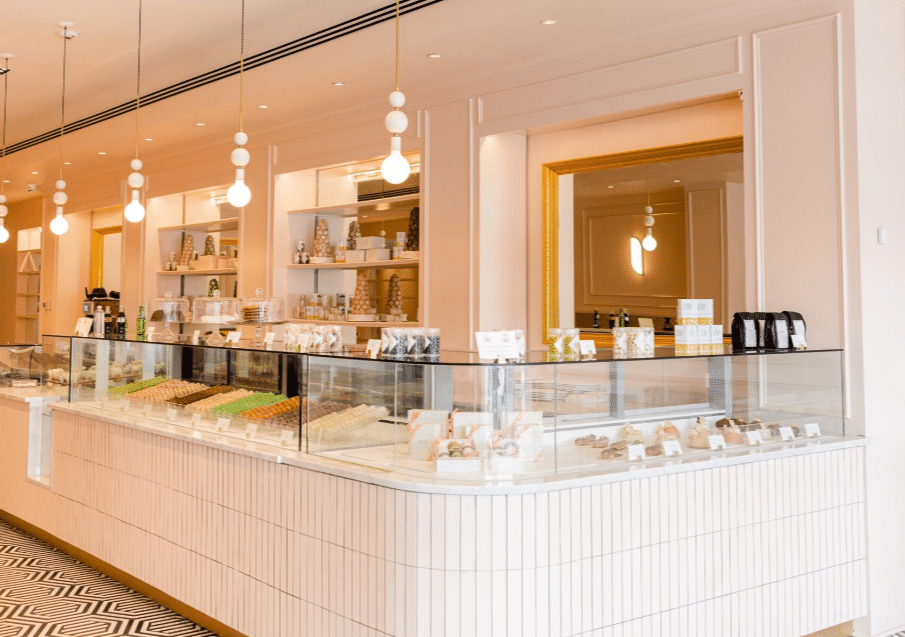
North American Properties (NAP) and Nuveen Real Estate announced three new businesses coming to The Forum Peachtree Corners (The Forum). The new brands include Kendra Scott, Sucré, and The NOW Massage.
“We’re excited to keep expanding our merchandising mix with more experiential concepts that motivate guests to extend their time on property. In addition to these new leases, several tenants are on track to open over the next few months, and we can’t wait to see the impact,” said Brooke Massey, director of leasing at NAP.
Here are the latest deals to be signed at The Forum:
Kendra Scott – Known for its plethora of accessories and customizable Color Bar experience, jewelry brand Kendra Scott blends classic designs with modern sophistication. Kendra Scott jewelry celebrates individuality and self-expression.
The growing brand has also donated over $50 million to local, national and international causes since its launch in 2010. The 2,284-square-foot space, situated next to Lovesac, opens later this spring, marking the retailer’s fourth location in the NAP portfolio.

Sucré – Founded in New Orleans, Sucré is a gourmet patisserie known for its macarons, gelato and other handmade, French-inspired desserts.
The sweet boutique will occupy a 1,718-square-foot space on the north end of the property and is slated to open later this year. Georgia is the brand’s first out-of-state venture, with The Forum being its third metro Atlanta location and eighth overall.
The NOW Massage – This brand is helping people discover the healing benefits of massage therapy.
The customizable menu offers guests three signature massage styles and a variety of exclusive enhancements like Deep Tissue, Herbal Heat Therapy, Hemp Calm Balm, Gua Sha, Gliding Cupping and more. Located near Mojito’s, the 2,414-square-foot massage boutique debuts late summer.
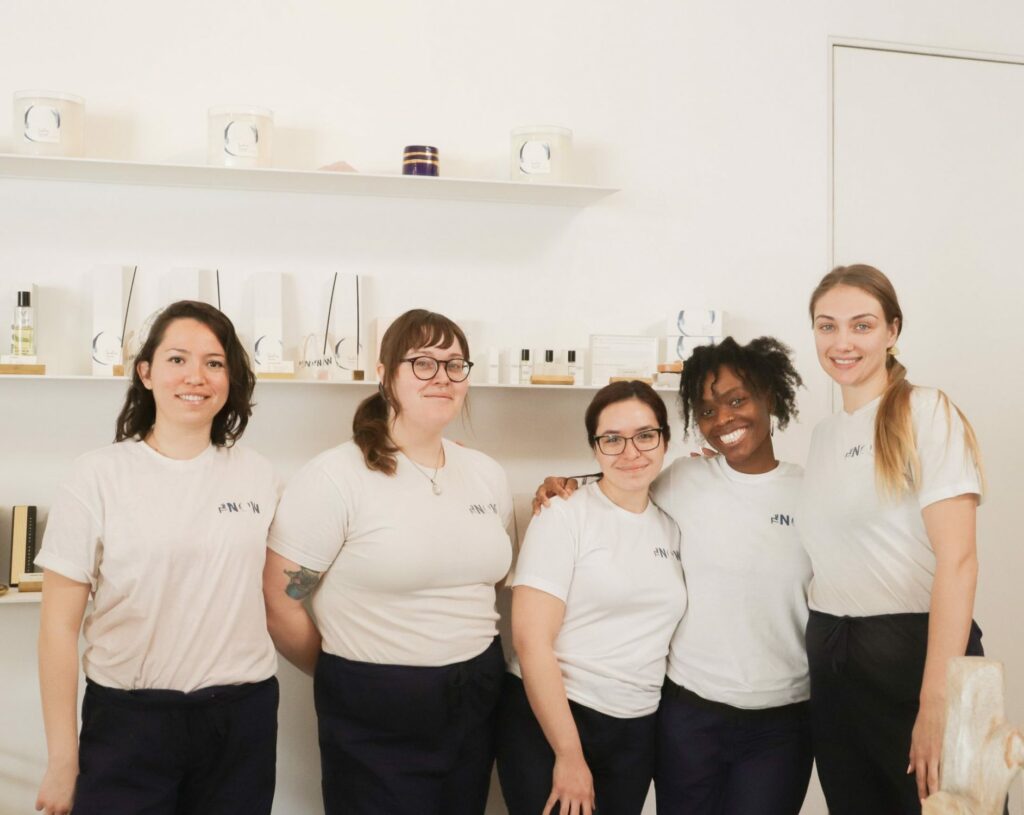
These businesses join:
Alloy Personal Training (opening this month),
Cookie Fix (open),
Gallery Anderson Smith (opening this month),
Giulia (opening this spring),
Lovesac (open),
Nando’s Peri-Peri (coming winter 2024), and
Stretchlab (open).
Since acquiring the property in March 2022, NAP has executed 39 deals with new, existing and temporary tenants alike.
To stay up to date on the latest happenings at The Forum, follow on Facebook, Instagram, and X or visit theforumpeachtree.com.
Related
Read the Digital Edition
Subscribe
Keep Up With Peachtree Corners News
Join our mailing list to receive the latest news and updates from our team.
You have Successfully Subscribed!

Exploring Israeli Innovation in the Smart City Sector with Einav Gabbay [Podcast]

Georgia United Methodist Foundation Announces Changes to Finance Team

BRACK: Peachtree Corners to lose Peterbrooke Chocolatier

North American Properties Revitalizes Avenue East Cobb

Spring Voting Will Determine Important Gwinnett School Board Elections

Local Non-profit Boy With a Ball Announces Dates for Upcoming Conference

Local Non-profit Boy With a Ball Announces Dates for Upcoming Conference

Spring Voting Will Determine Important Gwinnett School Board Elections

BRACK: Peachtree Corners to lose Peterbrooke Chocolatier

Georgia United Methodist Foundation Announces Changes to Finance Team

North American Properties Revitalizes Avenue East Cobb

Exploring Israeli Innovation in the Smart City Sector with Einav Gabbay [Podcast]

North American Properties Secures 3 New Brands for The Forum

April/May Events Going on at Gwinnett County Parks

Light up the Corners [Video]

Capitalist Sage: Business Leadership in Your Community [Podcast]

Cliff Bramble: A Culinary Adventure through Italy

Top 10 Brunch Places in Gwinnett County

A Hunger for Hospitality

THE CORNERS EPISODE 3 – BLAXICAN PART 1

Top 10 Indoor Things To Do This Winter

The ED Hour: What it takes to Remove Barriers from Education
Peachtree Corners Life
Topics and Categories
Trending
-
Faith1 week ago
Georgia United Methodist Foundation Announces Changes to Finance Team
-
Business1 week ago
BRACK: Peachtree Corners to lose Peterbrooke Chocolatier
-
Business1 week ago
North American Properties Revitalizes Avenue East Cobb
-
Education3 days ago
Spring Voting Will Determine Important Gwinnett School Board Elections







